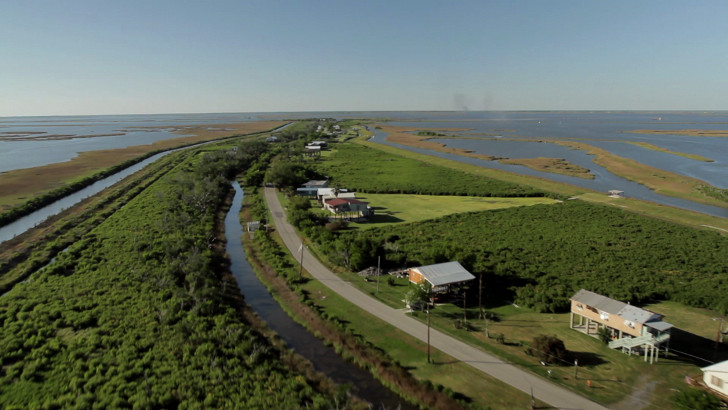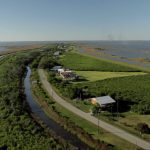Why is this Inhabited Louisiana Island Sinking into the Gulf?

View Slideshow
Much has been written lately of the devastating coastal land loss that is dragging southern Louisiana into the Gulf of Mexico. Erosion of the wetlands—in large part a result of activities by oil and gas companies—is causing the state to lose a football field of land every hour. This makes the region the fastest-disappearing landmass on earth. Isle de Jean Charles, a narrow strip of land in Terrebone Parish that is home to 25 families, is one of the communities in this region that is sinking into the sea.
In 1950, Isle de Jean Charles measured 11 miles by five miles. As of 2014 it measures just two miles by a quarter mile; this constitutes a 99 percent change in landmass within the lifetime of some residents. According to the BBC, the US Geological Survey has warned that the entirety of Louisiana’s coastal wetlands, which represents 40 percent of all wetlands in the U.S., “could be destroyed within 200 years.”
In addition to being home to generations-old communities, Louisiana’s wetlands are home to an extraordinary diversity of wildlife, and provide a much needed natural barrier against the storm surges that occur during hurricanes. Just 1.3 miles of wetlands can reduce a storm surge by a foot. That is a foot less water coming onto land during a storm—the wetlands are vital to reducing erosion of the coastline and destruction to lives and property. This is especially important in areas such as Isle de Jean Charles, which lie outside of the areas protected by the Levee Board.
So what’s causing this alarming rate of land loss? Simply put, a lot of things, and most of them are man made. The dredging of canals through the bayous to lay oil and gas pipelines has significantly contributed to erosion – by removing trees and plants that hold thewetlandstogether, by allowing salt water to course into fresh water marshes and by the invariable leaks that come from these pipelines. Additionally, sea level rise, logging, construction work and continued hurricanes have added to the land loss.
For more information on the wetlands, check out the Gulf Restoration Network and the Coalition to Restore Coastal Louisiana.
For more information on Isle de Jean Charles, check out the upcoming documentaries Can’t Stop the Water and Last Stand on the Island. The BBC’s Pop Up also has a great short video here.


